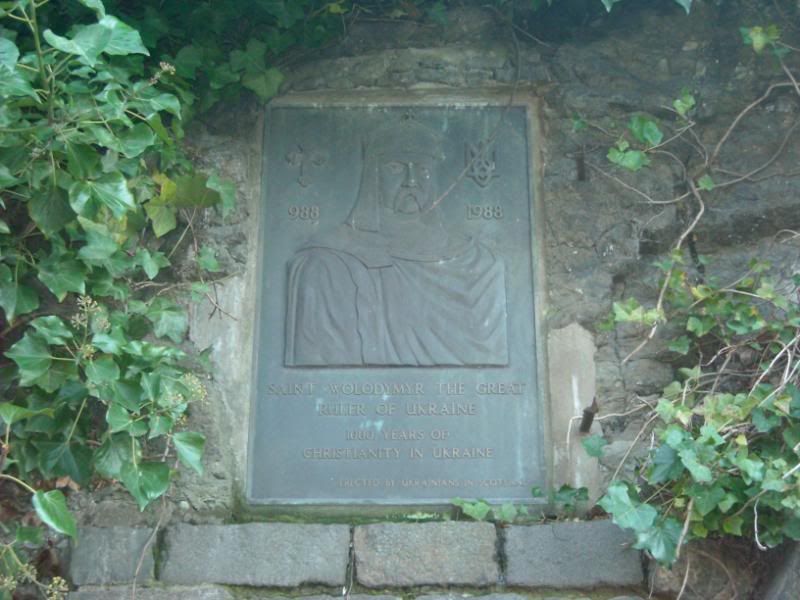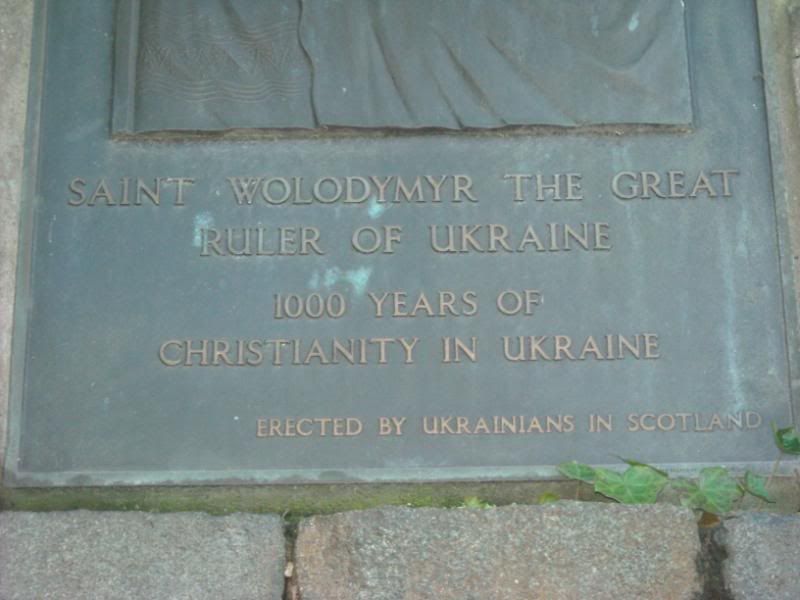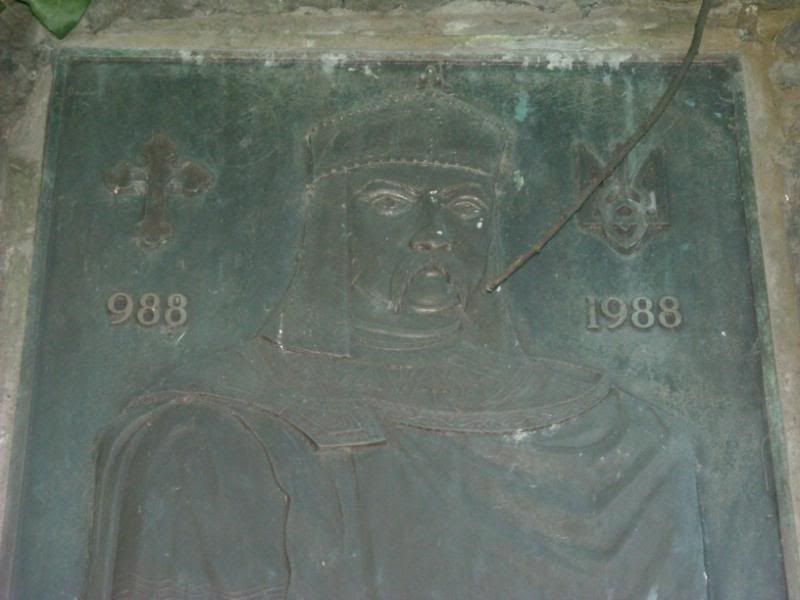 |
SMM+S
A forum to share photographs and information on Scottish Monuments, Memorials and Architectural Sculpture
|
| View previous topic :: View next topic |
| Author |
Message |
Adam Brown
Forum Admin
Joined: 25 Nov 2008
Posts: 415
Location: Edinburgh
|
 Posted: Fri Feb 27, 2009 9:49 am Post subject: 1000 Years of Christiantity in Ukraine, Calton Hill Posted: Fri Feb 27, 2009 9:49 am Post subject: 1000 Years of Christiantity in Ukraine, Calton Hill |
 |
|
1000 Years of Christiantity in Ukraine Plaque
Location: Steps to Calton Hill opposite St Andrew House
OS Ref: NT 261 741
I don't know why this memorial erected by the Ukranians in Scotland in 1988 is on this part of Calton Hill. It may be that the Ukranian Greek Catholic Church has a church in nearby Dalmeny Street, Our Lady Of Pochayev and Saint Andrew.



Adam
_________________
Scottish War Memorials Project
Scottish War Graves Project |
|
| Back to top |
|
 |
Adam Brown
Forum Admin
Joined: 25 Nov 2008
Posts: 415
Location: Edinburgh
|
 Posted: Fri Feb 27, 2009 10:07 am Post subject: Posted: Fri Feb 27, 2009 10:07 am Post subject: |
 |
|
The magnificent chap on the plaque is St Wolodymyr, also known as St Volodymyr, or Vladimir I of Kiev, or Vladimir Svyatoslavich the Great.
In fact according to Wikipedia his name can be translated as..
in modern Ukrainian as Volodymyr (Володимир),
in Old Church Slavonic and modern Russian as Vladimir (Владимир),
in Old Norse as Valdamarr,
and the modern Scandinavian languages as Valdemar.
Itís also worth quoting Wikipedia on the background to the conversion. According to the entry below there was a very practical approach in the decision to convert!
http://en.wikipedia.org/wiki/St._Vladimir
The Primary Chronicle reports that in the year 987, as the result of a consultation with his boyars, Vladimir sent envoys to study the religions of the various neighboring nations whose representatives had been urging him to embrace their respective faiths. The result is amusingly described by the chronicler Nestor.
Of the Muslim Bulgarians of the Volga the envoys reported there is no gladness among them; only sorrow and a great stench, and that their religion was undesirable due to its taboo against alcoholic beverages and pork; supposedly, Vladimir said on that occasion: "Drinking is the joy of the Rus'."
Russian sources also describe Vladimir consulting with Jewish envoys (who may or may not have been Khazars), and questioning them about their religion but ultimately rejecting it, saying that their loss of Jerusalem was evidence of their having been abandoned by God.
Ultimately Vladimir settled on Christianity. In the churches of the Germans his emissaries saw no beauty; but at Constantinople, where the full festival ritual of the Byzantine Church was set in motion to impress them, they found their ideal: "We no longer knew whether we were in heaven or on earth," they reported, describing a majestic Divine Liturgy in Hagia Sophia, "nor such beauty, and we know not how to tell of it."
If Vladimir was impressed by this account of his envoys, he was yet more so by political gains of the Byzantine alliance.
In 988, having taken the town of Chersonesos in Crimea, he boldly negotiated for the hand of the emperor Basil II's sister, Anna. Never had a Greek imperial princess, and one "born-in-the-purple" at that, married a barbarian before, as matrimonial offers of French kings and German emperors had been peremptorily rejected. In short, to marry the 27-year-old princess off to a pagan Slav seemed impossible.
Vladimir, however, was baptized at Cherson, taking the Christian name of Basil out of compliment to his imperial brother-in-law; the sacrament was followed by his wedding with Anna. Returning to Kiev in triumph, he destroyed pagan monuments and established many churches, starting with the splendid Church of the Tithes (989) and monasteries on Mt. Athos.
Arab sources, both Muslim and Christian, present a different story of Vladimir's conversion. Yahya of Antioch, al-Rudhrawari, al-Makin, al-Dimashki, and ibn al-Athir all give essentially the same account.
In 987, Bardas Sclerus and Bardas Phocas revolted against the Byzantine emperor Basil II. Both rebels briefly joined forces, but then Bardas Phocas proclaimed himself emperor on September 14, 987. Basil II turned to the Kievan Rus' for assistance, even though they were considered enemies at that time.
Vladimir agreed, in exchange for a marital tie; he also agreed to accept Orthodox Christianity as his religion and bring his people to the new faith. When the wedding arrangements were settled, Vladimir dispatched 6,000 troops to the Byzantine Empire and they helped to put down the revolt.
_________________
Scottish War Memorials Project
Scottish War Graves Project |
|
| Back to top |
|
 |
|
|
You cannot post new topics in this forum
You cannot reply to topics in this forum
You cannot edit your posts in this forum
You cannot delete your posts in this forum
You cannot vote in polls in this forum
|
|





